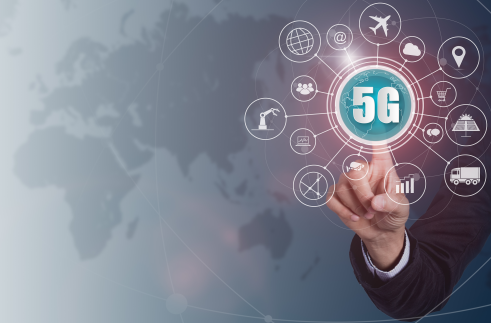Everything you need to know about 5G small cell deployments

Everything you need to know about 5G small cell deployments

5G small cells play a key role in many use cases.
A fully digitized connected world is a distant reality, but with the advent of 5G, connecting the world has become easier. Small cells are the best devices for 5G deployment.
Small cells are low-power, short-range wireless transmission systems (base stations) designed to serve indoor and outdoor applications or restricted geographic areas. Small cells, on the other hand, have all the essential characteristics of traditional base stations and can handle high data rates for a single user. In 5G and LTE advanced deployments, small cells are critical for the efficient delivery of high-speed mobile broadband and other low-latency applications.
Types of 5G Small Cells
Enterprises need to be aware of the various 5G small cell types as they have various use cases, power levels and coverage limitations. Compared to previous generations, small cells in 5G networks will be used in a wider range of scenarios and various architectures.
The three main subtypes of tiny cells are listed below.
- Femtocells
Primarily as an inexpensive way to increase coverage within buildings. Femtocells support 8-16 users with a range of 30-165 feet and backhaul connections via wired or fiber.
- Femtocells
Used to increase indoor and outdoor coverage of small businesses such as offices, hospitals, shopping malls, universities and workplaces. Picocells utilize wired or fiber optic backhaul connections, covering 330-820 feet and accommodating 32-64 people.
- Microcells
Microcells are used to provide coverage in specific areas, such as hotels, shopping malls and special locations within transportation hubs. Using cable, fiber or microwave backhaul links, Microcells have a range of up to 1.5 kilometers and can accommodate 200 simultaneous users. Microcells are more expensive compared to Femtocells and Femtocells.
How do small cells work?
Small cells use advanced methods such as MIMO, beamforming, and mmWave for distribution, just like regular cells. Using the principle of small cells, a low-power transmitting station can be quickly established. In addition, the small cell hardware unit becomes simpler, which makes implementation faster and simpler.
For indoor use, small base stations (transceivers) can be mounted on the wall; for outdoor applications, small towers or lamp posts can be used. Microwave connections, cable connections, and fiber optic connections can all be used for backhaul. Just connect the backhaul and power and the configuration is minimal.
The evolving role of 5G small cells in the wireless age
It's important to remember that microcells are not a novel 5G technology. Small cells are already installed in 3G and 4G networks.
In 3G Code Division Multiple Access (CDMA) or Wideband Code Division Multiple Access (WCDMA) networks, small cells are mostly used in residential areas to increase coverage so that the cellular network can reach as many customers as possible.
As networks become denser in metropolitan areas or businesses located in large buildings, microcells are used in 4G networks to reduce capital expenditures and maximize network expansion.
In addition to supporting smartphones, 5G connects everything, including cars, IoT devices, and cutting-edge "killer" apps. The concepts of providing capacity for mobile devices and providing connectivity for IoT sensors will be critical to the development of microcell 5G.
Advantages of Small Cell Deployments
- Coverage is improved where the signal is poor or unavailable due to congestion. This makes it easier for network data centers to better serve blocked indoor and outdoor locations.
- Small cells help 5G wireless networks support more users for the reasons mentioned above
- Microcells offer faster data service due to lower latency and proximity to consumers
- Small cells use less energy because they operate at low power
- Smaller size means smaller cells are easier to handle and install
- Helps offload cellular traffic, effectively providing users with higher signal quality
- Small cells can provide higher data rates up to several gigabits per second
Disadvantages of Small Cell Deployments
- One of the main drawbacks is the impact of low power on coverage
- The number of users per cell is limited due to resource constraints
- For many deployments, significant expenditure is required
- Compared with traditional base stations, its coverage is smaller
- Manage fewer simultaneous web surfing and voice/data call sessions
- Costs higher than relays and repeaters
Application of Small Cell Technology
- Key applications include the development of 5G and LTE advanced networks to improve mobile broadband and fiber optic cables in densely populated areas to reduce data traffic congestion and improve user experience.
- Provide mission-critical services that require a highly reliable network and minimal latency.
- Some use cases for the Internet of Things (IoT) include smart healthcare, smart cities, and smart homes.
- Multiple unit installations can accommodate large numbers of customers during special events such as sports and gaming.
- Drones with disaster management software.
Since 5G technology is the framework for multiple applications in the future, it must comply with all requirements. The small cell concept is an ideal way to provide users with better mobile internet, reduced latency and reliable service. Higher order modulation techniques, MIMO technology and mmWave spectrum will ensure proper operation of upcoming small cell deployments.